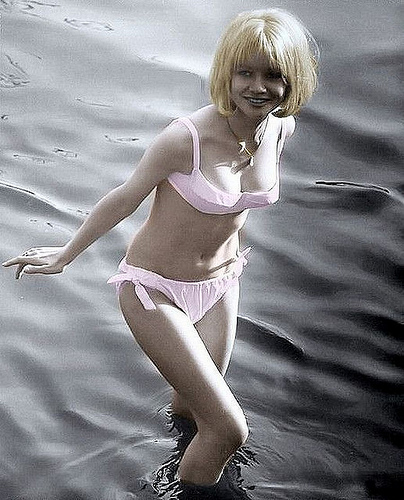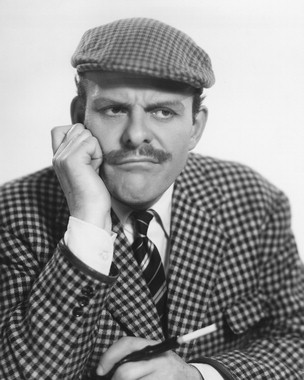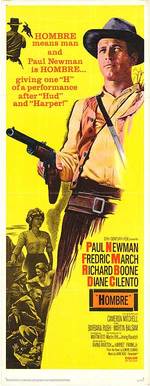 In the 1960s, Paul Newman was on a roll with movies beginning with the letter “H.” First came Hud in 1963, then Harper in 1966. One year later, Newman was back with Hombre, a tough, somber western which ranks with the best that decade has to offer. Newman tamps down his usual cocky charm to play the laconic “hombre” of the title, a white man raised among the Apache. As a boy he was “rescued” and taken in by a kind man named Russell, who named him John Russell and taught him the white man’s ways. But John Russell preferred the Apache way of life and returned to live with them, working first for the reservation police, then as a free agent, which is where we first meet him, watching stoically as he and some fellow Apaches try to trap some wild mustangs to sell to raise money for the poverty-stricken tribe. Russell is told by old friend and stagecoach owner Mendez (Martin Balsam) that the elder Russell has died, and left him a boarding house in his will. Attractive, salty landlady Jessie (Diane Cilento) has hopes that new owner Russell will keep the business going, but after a quick inspection, Russell informs her that he’s had an offer on the place and he’s going to sell. That leaves Jessie and the other tenants of the boarding house without a place to stay. When Indian agent Favor (Frederic March) and his high-falutin’ wife, Audra (Barbara Rush), pay a premium to get a quick stage out of town, many of the now-homeless tenants pack up and join in, including unhappy newlyweds Billy Lee (Peter Lazar) and Doris (Margaret Blye), Mendez, and Jessie herself, after her long-time lover, Braden (Cameron Mitchell), the local sheriff, flatly refuses to make an honest woman of her. The last two passengers are Russell and big, swaggering Cyrano Grimes (Richard Boone).
21 Comments
Much like Gary Cooper - that other prime example of the strong, silent type - Randolph Scott is an actor that I've only come to appreciate over the past several years. Though he started off in standard "handsome leading man" roles in comedies and dramas back in the 1930s, what I like to call the "real" Randolph Scott emerged in the late 1940s and really came to the fore in the 1950s. As he aged, Scott's handsome face became more weathered and craggy, his air of quiet authority and mild Southern gentility more pronounced, and from 1948 on, all his roles but one were on horseback, where he truly belonged. Rather than shirk it, Scott happily embraced his status as a "cowboy" actor. It was a genre which he obviously enjoyed, one in which he excelled, and one that, along with his canny business acumen, made him a rich man for the rest of his long life, long after he retired from acting. Though superstars like John Wayne and Clint Eastwood loom larger in the public imagination of what a western movie hero looks like, it's Randolph Scott who to my mind seems most inextricably linked to the genre - the quintessential screen cowboy. In his unassuming, solid-as-a-rock way, Scott headlined a string of colorful bread-and-butter westerns, modestly-budgeted but well-mounted, the top tier of which hang with the best that the 50s had to offer. And for those that know the way the western genre flourished and dominated that decade, that's no small praise indeed.
When I was growing up, back in the 1970s and 80s, one of the constant companions of my teenage movie viewing life was Leonard Maltin's Movie Guide. In those pre-Wikipedia and IMDB days, Maltin's book of capsule movie reviews was one of the few ways to easily access and cross-check information about movies seen on TV and early VHS. I always remember the lingering sense of disappointment when the (otherwise estimable) Mr. Maltin would dismiss or castigate a particular favorite film of mine. One of his reviews that has always stuck with me was his brief comment about one of my all time favorite films (not just westerns), The Big Country. It came down to one word - "overblown" - and what, to my mind, still is a grossly conservative three-star rating. That word, "overblown," annoyed me then and still does today. Though I suspect there are many out there who may tend to agree with Maltin, I take strong exception to that word. The Big Country is indeed big. It's long, no doubt (2 hours and 46 minutes, to be precise.) Epic, yes. Dramatic...certainly. Sprawling, even. But overblown? I beg to differ. I grew up on westerns. From "Clint Eastwood nights" on Sea-Tac's KCPQ Channel 13, to countless John Wayne films airing Saturday afternoons, to Bonanza, The Big Valley and The Rifleman reruns in syndication, to Gene Autry movies on cable, I devoured whatever hoss operas were served up on television. But the older I get, and the more westerns I see, the more I realize that I've only just barely scraped the tip of the iceberg of this, my favorite genre. Especially when it comes to that most prolific decade for the western, the 1950s, which not only saw a proliferation of big-budget "A" westerns, but a veritable mother lode of smaller-scale, bottom half of the bill "B" flicks that - thanks to the likes of Warner Archives, Shout Factory and others - are only now starting to appear on home video. These fun little cowboy yarns featured actors who might never have made it to the big time, but were definitely stars in their own right in this specialized field.  Case in point is George Montgomery, who top-billed nearly thirty such westerns throughout the 50s and into the early 60s, and who is a completely new discovery for me. Somehow, I've never come across this guy or any of his movies before, but am glad to have finally made his acquaintance with these two neat little meat-and-potatoes western tales. Released by United Artists, Gun Belt and The Lone Gun were both directed with gusto by longtime genre workhorse Ray Nazarro, and while neither could be said to be groundbreaking or full of psychological or stylistic complexity like some of their more famous 50s counterparts, both deliver the honest western goods, with strong casts, fast-paced stories and plenty of action. In fact, it was just this sort of straight-up, rock-solid western entertainment that powered the Hollywood movie machine, and the low-key yet undeniable pleasures they deliver should not be underestimated. Sterling Hayden and Yvonne De Carlo headline Shotgun, one of those modest, rock-solid western yarns that Hollywood used to churn out by the dozen back in the 1950s. Like so many of these wonderful, low- to mid-budget 50s westerns, it features a simple, cleanly told story with just enough adult themes and moral complexity to keep things interesting without compromising pacing or action, put together by a team of seasoned professionals who knew how to deliver a good time at the movies. This is the sort of film that seems tailor-made for a satisfying Saturday afternoon viewing.  Capt. Richard Lance (Gregory Peck) is a strict, by-the-book cavalry officer, unloved but respected by his men for his leadership and survival skills. Leading an expedition to the ironically-named Ft. Invincible, which guards a narrow pass through the mountains, Lance finds the troops there massacred by renegade Apache chief Tucsos and his men. Lance captures Tucsos and insists on bringing him back to Fort Winston to stand trial, against the advice of crusty scout Joe Harmony (Jeff Corey). Fort Winston’s ailing commander, Col. Drumm, worried that the fort is unprepared for an assault by Tucsos men, orders a detail to escort the Apache chief further north. Lance plans to lead the (likely suicidal) escort himself, and goes to bid farewell to his intended, Cathy Eversham (Barbara Payton). Lance’s best friend Capt. Holloway (Gig Young) also loves Cathy, and following the dictum "all's fair in love and war", is also making a play for her hand. Col. Drumm orders Lance to stay and command the fort and send Holloway in his place. Of course, Tucsos’ braves free him and torture and kill Holloway. Joe and a few other men return with Holloway’s body, and soon the whole fort thinks Lance sent Holloway to his death in his place out of cowardice. Cathy thinks Lance acted out of jealousy, and calls off their engagement.  I like it when a movie opens with a helpful map. Lance comes up with a plan to possibly delay an attack on the fort until a complement of relief troops arrive in 5 days. He picks seven men, most of whom hate his guts, all men he thinks can be best spared from guarding Fort Winston. These include an alcoholic Irish sergeant (Ward Bond); bullying Sgt. Murdoch (Neville Brand), who Lance has kept from promotion; a former Confederate who is being held for desertion of his cavalry post; a disgraced former West Point officer who has followed Lance into service looking for his best shot at revenge; a wild trooper commonly referred to as “the Arab” (Lon Chaney, Jr.); a cowardly young bugler; and a consumptive officer. Together with scout Joe Harmony, they head for the abandoned Ft. Invincible, with the hope of holding the nearby pass against Tucsos and his men until reinforcements arrive. It’s a daring and suicidal gambit that becomes increasingly hazardous for Capt. Lance. With the fort baking under a pitiless desert sun, a dwindling water supply, and the merciless Apache threat looming, the men begrudgingly come to realize that Lance is their best hope for survival. But will his plan be enough to stave off an attack against overwhelming odds? And will the men be able to put aside their hatred of Lance to work together as a team, or will they sacrifice their own lives to fulfill their revenge? Where would the movies be without horses?
There have been thousands of movies with horses in them, including tons of westerns. Many fine films have also been made spotlighting a particular horse (National Velvet, The Black Stallion, Seabiscuit). Bite the Bullet stands out from most westerns - and indeed, most films - as one of its main themes is how man relates to, treats - and mistreats - horses. Written and directed by Richard Brooks, it’s a sweeping, epic adventure tale about a grueling, 700-mile endurance horse race. The movie is full of action and incident, but it’s really a character piece. Brooks is less concerned with the race itself than he is with the kind of people who are crazy enough to take part in it.  Wandering outlaw “Bren” O’Malley (Kirk Douglas) rides out of the dust of the hills to a remote Mexican ranch. He’s come looking for a girl he loved and left, Belle (Dorothy Malone) now grown up and married to alcoholic ex-Confederate officer John Breckenridge (Joseph Cotton), and with a tomboyish daughter, Missy (Carol Lynley) on the cusp of womanhood. Hot on O’Malley’s trail is Texas lawman Dana Stribling (top-billed Rock Hudson), who has very personal reasons for bringing him back across the border to justice.  Breckenridge needs help running his cattle herd up north through hostile territory. O’Malley signs up for one-fifth of the herd and a promise to Breckenridge to take his wife from him. O’Malley talks Stribling into joining up as trail boss. The tension between the two men escalates further as Belle’s affections begin to turn toward Stribling, and Missy becomes more and more enamored with the charming killer O’Malley. Through the travails and dangers of the cattle drive (including a run-in with three unscrupulous rustlers, played by Jack Elam, Neville Brand and James Westmoreland), the two men eventually develop a grudging respect for each other. But that may not be enough to prevent the inevitable showdown between them… The Last Sunset carries on the “psychological western” tradition which began in the 1950s and was most notably developed by directors like Anthony Mann and Budd Boetticher. It’s a pretty twisted tale with a lot of raw emotion laid out there for all to see, all woven into the standard western format of the epic cattle drive. Its edgy character dynamics make for interesting viewing. It has all the standard elements that western fans like myself love so much – fistfights, tense standoffs, gunplay, plentiful scenes of cowboys riding through panoramic vistas, dusty frontier towns, camaraderie around the campfire, and men and women forced by their own personal codes into making tough choices that will forever change the course of their lives. To that is added an extra layer of complexity, courtesy of a script that isn’t afraid to go to some dark, unsavory places. 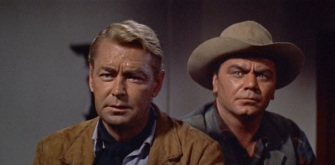 A lot of people have a set image of Westerns: horses, cowboys and Indians, gunfights, simple frontier justice. In actual fact, the western is a truly deep and wide-ranging genre. Any type of story can -- and has -- been told in western trappings, from deceptively simple good vs. evil throw-downs (High Noon), to Shakespearean tragedy (The Man from Laramie), to rollicking comedy (McClintock), to brooding meditations on family dysfunction (Track of the Cat), to elaborate con games (A Big Hand for the Little Lady) and biting satire (Little Big Man). The western can accommodate literally any kind of storytelling trope. Case in point is The Badlanders. Based on the same source novel as classic crime drama The Asphalt Jungle (1950), The Badlanders is basically a western riff on the heist movie, and it succeeds on both levels.  Peter von Hoeck, aka the Dutchman (Alan Ladd), gets released from Yuma prison and heads back to Prescott, Arizona, to extract his own particular brand of revenge on the men who set him up. No hardened criminal, he's a mining engineer and geologist, bilked of his share of a gold claim and set up by the corrupt sheriff. He teams up with fellow inmate John "Mac" McBain (Ernest Borgnine), another man cheated out of his gold-rich land by corrupt businessmen, and local dynamite expert, Vincente, to steal gold from a hidden shaft in Cyril Lounsberry’s mine and sell it back to him for a half share of $100,000. And they only have one day to pull off the heist. Needless to say, not everything goes according to plan... |
Videophilia!
Opinionated ramblings about new and old movies (mostly old, as that's the way I like 'em!) Blogs of Note
Stuart Galbraith IV's World Cinema Paradise
Movie Morlocks (TCM's Classic Movie Blog) 50 Westerns from the 50s Riding the High Country Sweet Freedom Tipping My Fedora Thrilling Days of Yesteryear Silver Screenings Laura's Miscellaneous Musings Classic TV and Film Cafe Just a Cineast She Blogged By Night Chess, Comics, Crosswords, Books, Music, Cinema Out of the Past - A Classic Film Blog Pretty Sinister Books They Don't Make 'Em Like They Used To In So Many Words... Greenbriar Picture Shows Flix Chatter My Love of Old Hollywood Tales of the Easily Distracted Another Old Movie Blog Lasso the Movies Kevin's Movie Corner Films From Beyond the Time Barrier Carole & Co. Rupert Pupkin Speaks Caftan Woman Vienna's Classic Hollywood The Lady Eve's Reel Life ClassicBecky's Brain Food Hey!
Be sure to subscribe to the RSS feed below, to be informed of new postings! Categories
All
Archives
September 2015
|
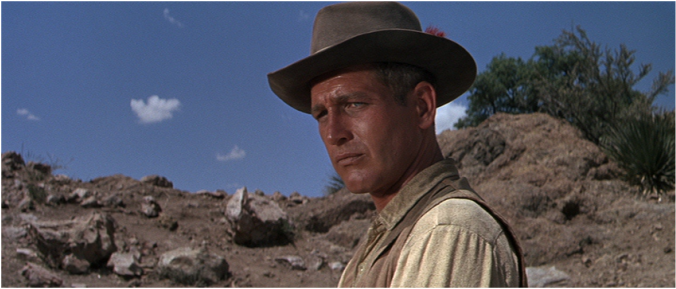





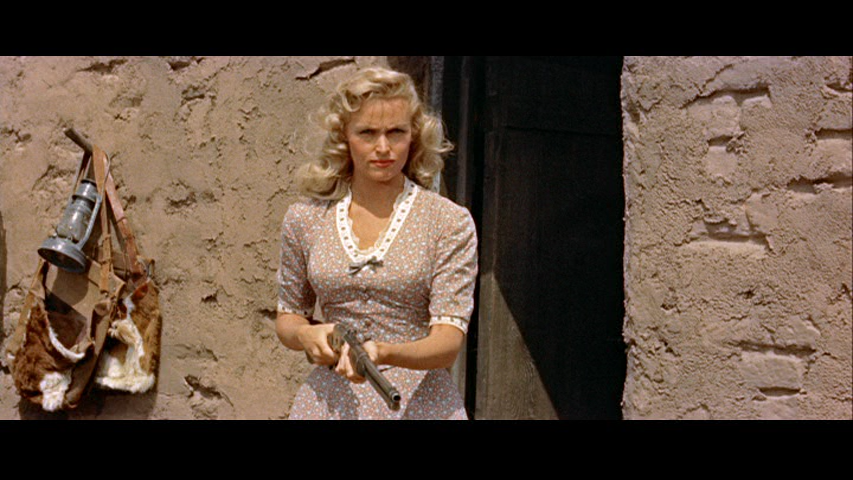
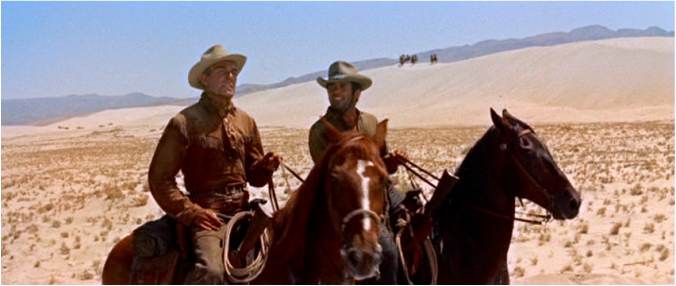








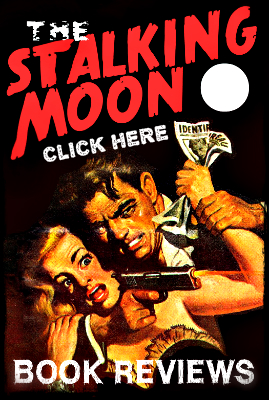

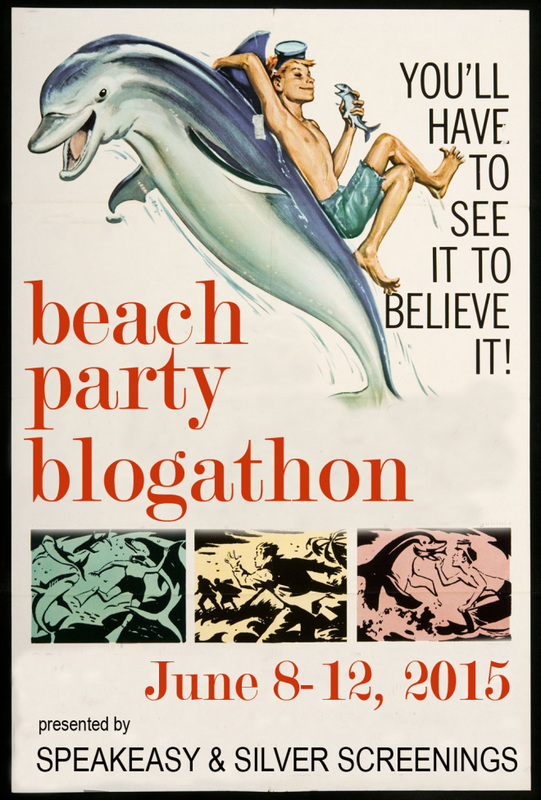
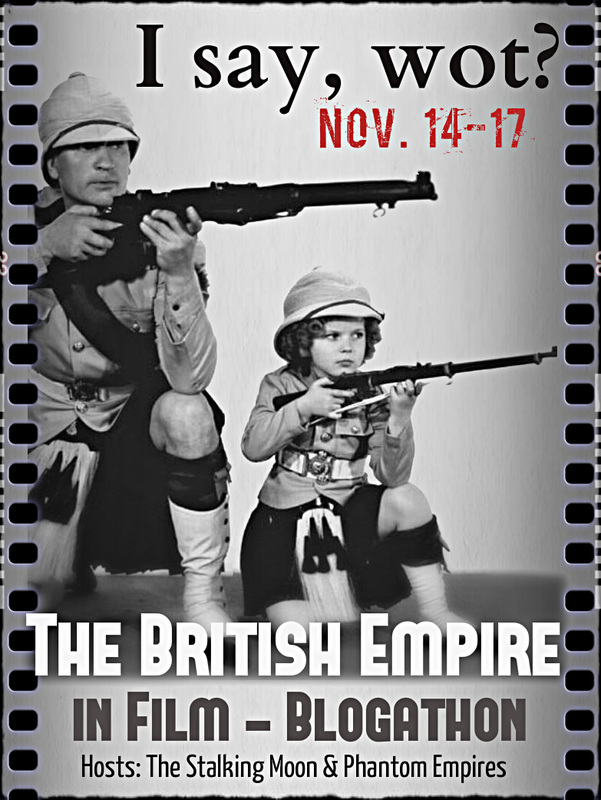


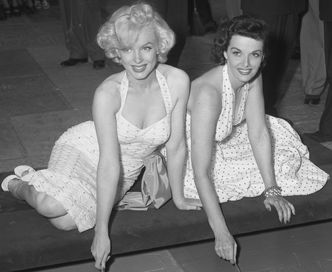
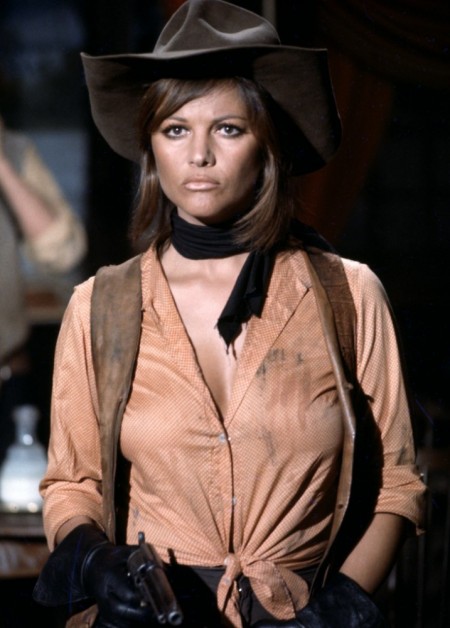























 RSS Feed
RSS Feed




